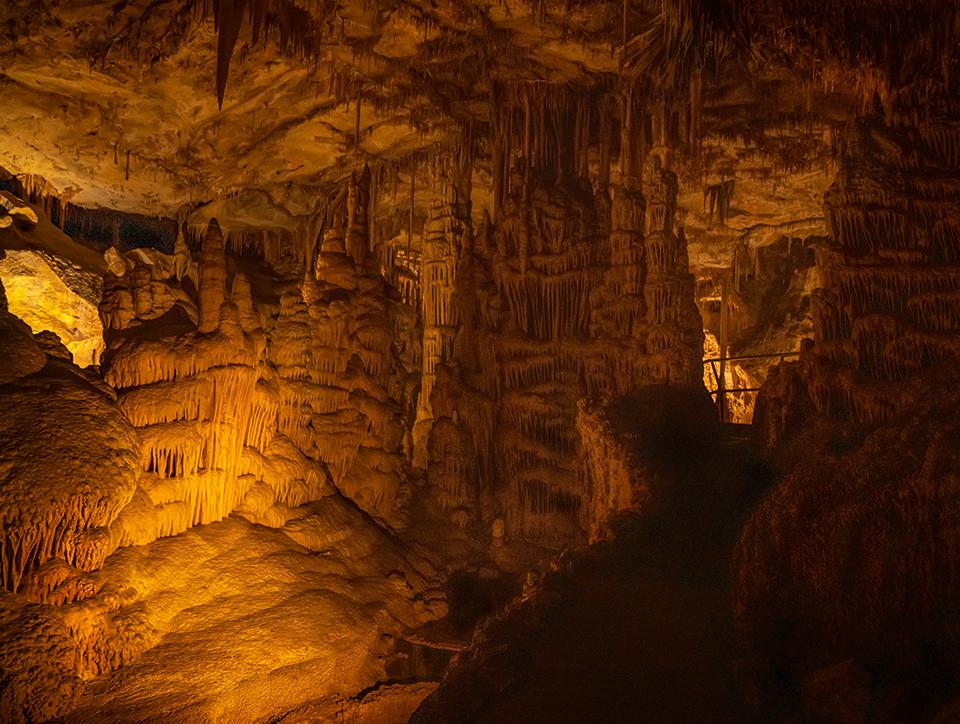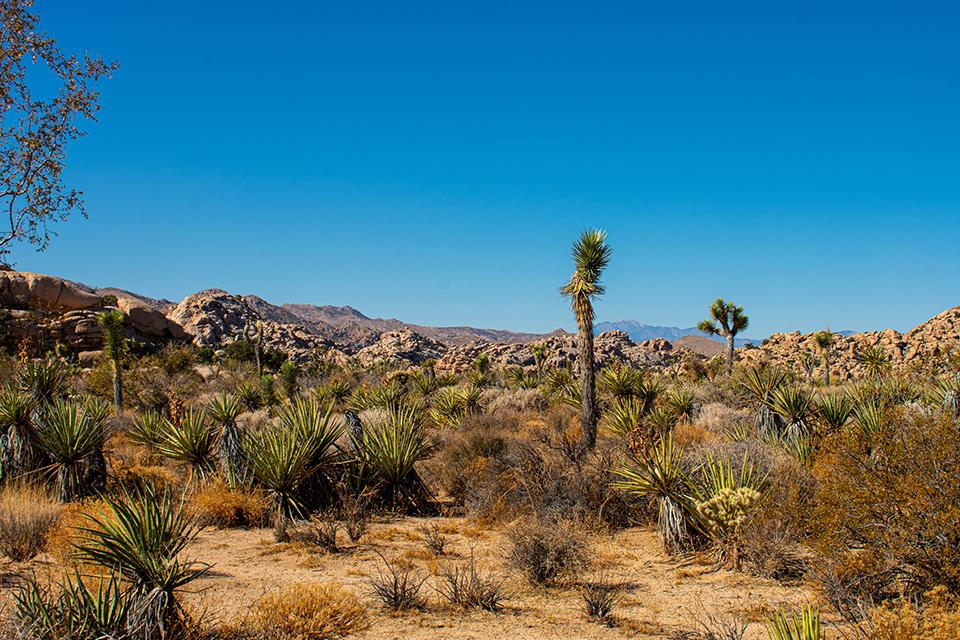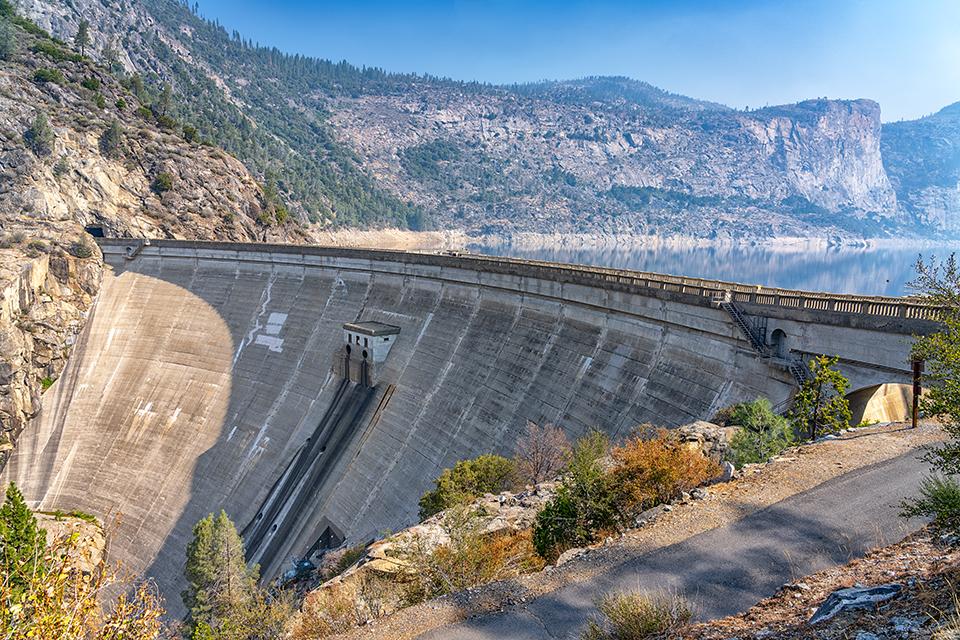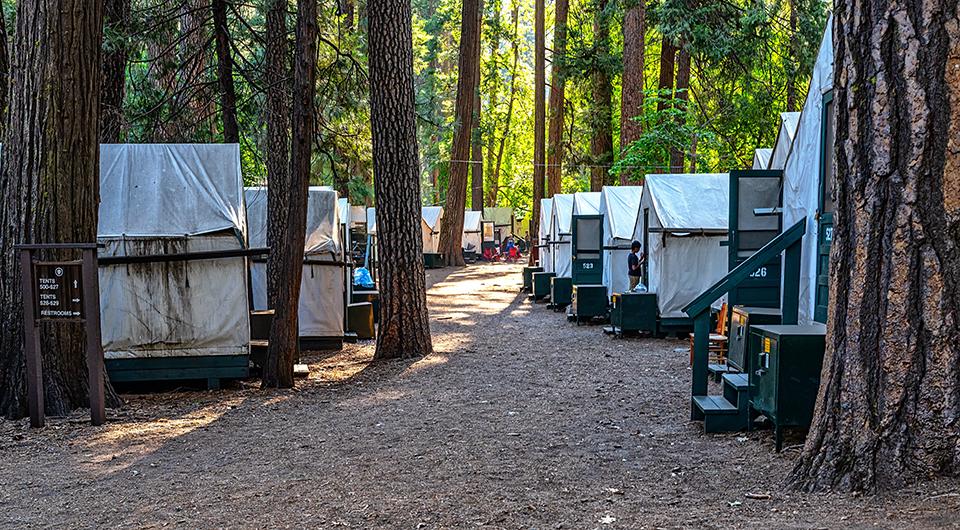
Sunrise over Diablo Lake, Ross Lake National Recreation Area, North Cascades National Park Complex / Rebecca Latson
If I thought September was a good month for national park establishments, it’s because I hadn’t looked at October, yet. Eleven national parks were established over the years, all during the month of October: Yosemite, North Cascades, Redwood, Saguaro, Cuyahoga Valley, Black Canyon of the Gunnison, Dry Tortugas, Great Basin, American Samoa, Death Valley, and Joshua Tree national parks. So, since there are 11 parks, I guess this quiz will have 11 questions. See how much you know before checking the answers at the bottom of this piece.
1. If you’ve ever driven Washington’s State Route 20 (aka the North Cascades Highway) in the North Cascades National Park Complex, you’ve probably stopped at the Diablo Lake Overlook to view the vibrant, turquoise water of this lake. This water color is most vibrant during the sunny days of what three months?
a) September, October, November
b) July, August, September
c) May, June, July
d) June, July, August

Claret cup cactus, Saguaro National Park / National Park Service
2. Saguaro National Park is home to how many species of cactus?
a) 10
b) 25
c) 30
d) 42
3. “The public roles of women in Cuyahoga Valley reflect their diverse and evolving roles in society at large. Women created overnight camps here. Two of those camps that remain are Camp Mueller (Phillis Wheatley Association)” and _____.
a) Camp Ledgewood
b) Pine Hollow Wetmore
c) Nimisila Reservoir
d) Punderson
4. Tortugas Harbor Lighthouse was once known by another name:
a) Loggerhead light
b) Dry Tortugas light
c) Garden Key light
d) Fort Jefferson light

Inside Lehman Caves, Great Basin National Park / Rebecca Latson
5. Great Basin National Park contains ____ known caves.
a) 40
b) 21
c) 55
d) 32

Fruit bat, National Park of American Samoa / National Park Service
6. How many species of bats inhabit the islands of the National Park of American Samoa?
a) one
b) two
c) three
d) four

Map showing the location of the Gunnison Tunnel, Black Canyon of the Gunnison National Park / National Park Service
7. The idea for creating the Gunnison Tunnel, a venue to “transfer a portion of the Gunnison River to the fields of the Uncompahgre Valley to the west,” is credited to___.
a) John Curtis
b) Will Torrence
c) Frank Lauzon
d) Abraham Lincoln Fellows

Badwater Basin in a storm, Death Valley National Park / National Park Service
8. The salt flats of Badwater Basin at Death Valley National Park cover nearly _____ square miles.
a) 500
b) 100
c) 300
d) 200

Desert landscape, Joshua Tree National Park / NPS-Jane Gamble
9. “Two distinct desert ecosystems, the Colorado and the _____, come together in Joshua Tree National Park.”
a) Mojave
b) Sonoran
c) Chihuahuan
d) Great Basin

The O'Shaughnessy Dam and Hetch Hetchy Reservoir, Yosemite National Park / Rebecca Latson
10. True or False: A great drought that affected San Francisco and the Bay Area was used as justification for the ultimate flooding of Hetch Hetchy Valley and construction of the O’Shaughnessy Dam.
a) True
b) False

Rhytidiadelphus triquetrus, Redwood National and State Parks / Jason Brooks
11. During a hike among the coastal redwoods of Redwood National and State Parks, you’ll see all sorts of vegetation. Take a look at the moss in the photo above. Its scientific name is Rhytidiadelphus triquetrus, but it’s known by another name:
a) electrified cat’s tail moss
b) extinguisher moss
c) bottlebrush moss
d) prickly moss
Trivia

Great Basin Pseudoscorpion molt, Lehman Caves, Great Basin National Park / Rebecca Latson
“Endemic animals are special because they are found in only one location on the planet, and nowhere else. Great Basin National Park is home to several endemic plant and animal species. The ‘sky island’ geography of the Great Basin region lends itself to large numbers of highly specialized species.”
During a group tour in Lehman Caves, our intern guide Kelsey pointed out to us the molt of one such interesting creature endemic to the area. It was tiny – not quite an inch long. Can you spot it in the image above? It’s known as the Great Basin Cave Pseudoscorpion and lives within Lehman Caves. It’s an arachnid that looks like a scorpion but doesn’t have a tail. It was first discovered back in the 1930s. “While it survives in some of the Park's other caves, it has not been found anywhere outside of Great Basin National Park.”

The tents of Curry Village, Yosemite National Park / Rebecca Latson
“Jennie Foster Curry, known fondly as ‘Mother’ Curry, moved to Yosemite in 1899 with her husband David. They ran a successful tent camp in Yosemite Valley at the base of Glacier Point, today known as Curry Village. ‘Mother’ Curry raised her three children with a firm, loving hand, and ran Camp Curry in the same manner. She oversaw the hiring of summer help and took great care in their well-being as employees, young adults, and friends. Additionally, she made beds, packed box lunches, and helped to plan additional guest services. After David’s death in 1917, ‘Mother’ Curry remained devoted to the camp and oversaw its expansions along with her children. By 1922, Camp Curry had grown to include: 650 tents, 60 rooms in cottages, a cafeteria, bakery, ice plant, candy kitchen, soda fountain, studio, laundry, bathhouses, swimming pool, auditorium, bowling alley, pool hall, a post office, and a store!” To learn more about Yosemite’s women, click here.

Coastal redwood treetops in the mist, Redwood National and State Parks / Rebecca Latson
“Exactly why the coastal redwoods grow so tall is a mystery. Theories continue to develop but proof remains elusive. The trees can reach ages of 2,000 years and regularly reach 600 years. Resistance to natural enemies such as insects and fire are built-in features of a coast redwood. Diseases are virtually unknown and insect damage insignificant thanks to the high tannin content of the wood. Thick bark and foliage that rests high above the ground provides protection from all but the hottest fires.”
“The coast redwood environment recycles naturally; because the 100-plus inches of annual rainfall leaves the soil with few nutrients, the trees rely on each other, living and dead for their vital nutrients. The trees need to decay naturally to fully participate in this cycle, so when logging occurs, the natural recycling is interrupted.”
To learn more about coastal redwood trees, click here.
Quiz Answers
1b
The turquoise water color of Diablo Lake in the North Cascades National Park Complex is most vibrant during the sunny days of July, August, and September. FYI, the turquoise color is the result of what is called “glacial flour” suspended in the lake water. Glacial flour is composed of silt- and clay-sized rock particles created by glaciers as their great weight and movement slides over and pulverizes portions of the bedrock.
2b
Saguaro National Park “is home to 25 species of cactus ranging from the towering saguaro cactus (Carnegiea gigantea) to the tiniest type of cactus in the park, the mammillaria (Mammillaria spp).” To learn about the most common cacti species you may see in this national park, click here.
3a.
“Women were [and are] outdoor enthusiasts in Cuyahoga Valley National Park, creating overnight camps there. Two of which remain are Camp Mueller (Phillis Wheatley Association) and Camp Ledgewood (Girl Scouts of the Western Reserve).” To read more about the women of Cuyahoga Valley, click here. FYI, regarding camping, Cuyahoga Valley no longer offers camping within the park, and camping or staying overnight in parking lots is prohibited. Backcountry camping is also prohibited.
4c
Tortugas Harbor Lighthouse at Dry Tortugas National Park, was once known as the Garden Key light. To learn more about the lighthouses of this park, click here.
5a
“Great Basin National Park contains 40 known caves, filled with unusual cave life and unique features. The most famous cave in this national park is Lehman Caves.” Click here to take a virtual tour.
6c
“Fruit bats are one of the more unusual animals in American Samoa, especially for visitors from areas where bats are small and rarely seen. Three species inhabit the islands –two large fruit bats (Pteropus samoensis, P. tonganus) and a small insect-eating bat (Emballonura semicaudata).” To learn more about the fruit bats that inhabit the islands of the park, click here.
7c
“The idea for a tunnel is credited to Frank Lauzon, a miner, prospecting in the mountains around Leadville, Colorado and Moab, Utah. By the early 1890s he was trying to succeed at farming in Montrose. A story is told that he had a dream. Worries of making ends meet plagued him, when, in a cold sweat, he fell asleep. It was then that he saw the waters of the Gunnison River brought to the valley.” To learn more about the years it took to bring the Gunnison Tunnel from a dream to fruition, click here.
8d
The salt flats in Badwater Basin cover nearly 200 square miles and are among the largest protected salt flats in the world. To learn more about Badwater Basin’s salt flats, click here.
9a
“Two distinct desert ecosystems, the Colorado and the Mojave, come together in Joshua Tree National Park.” To learn more about deserts in general, and Mojave Desert in particular, click here.
10b False
“The 1906 earthquake and fire were used as justifications for a new water source” and highlighted the growing city of San Francisco’s and the Bay Area’s need for a reliable water source. “Congressman John Raker introduced the act that authorized the [O’Shaughnessy] dam ...”
11a
“You might think the forest floor hid secret electric outlets if you came upon a clump of Rhytidiadelphus triquetrus, also known as electrified cat’s tail moss. This folk name arises from the bristly “leaves” growing straight out in all directions from its reddish stem. Electrified cat’s tail moss matures into a greenish-yellow cluster, or loose mat, of interwoven growth (not true stems or leaves) stretching up to 15 cm long on the forest floor, in moist habitats.” To learn more about this spiky moss you might see not only at Redwoods National and State Parks, but also at Whiskeytown National Recreation Area and Oregon Caves National Monument and Preserve, click here.
References
Note: Different websites may have different national park establishment dates, so, I used this NPS publication as the standard.



Add comment